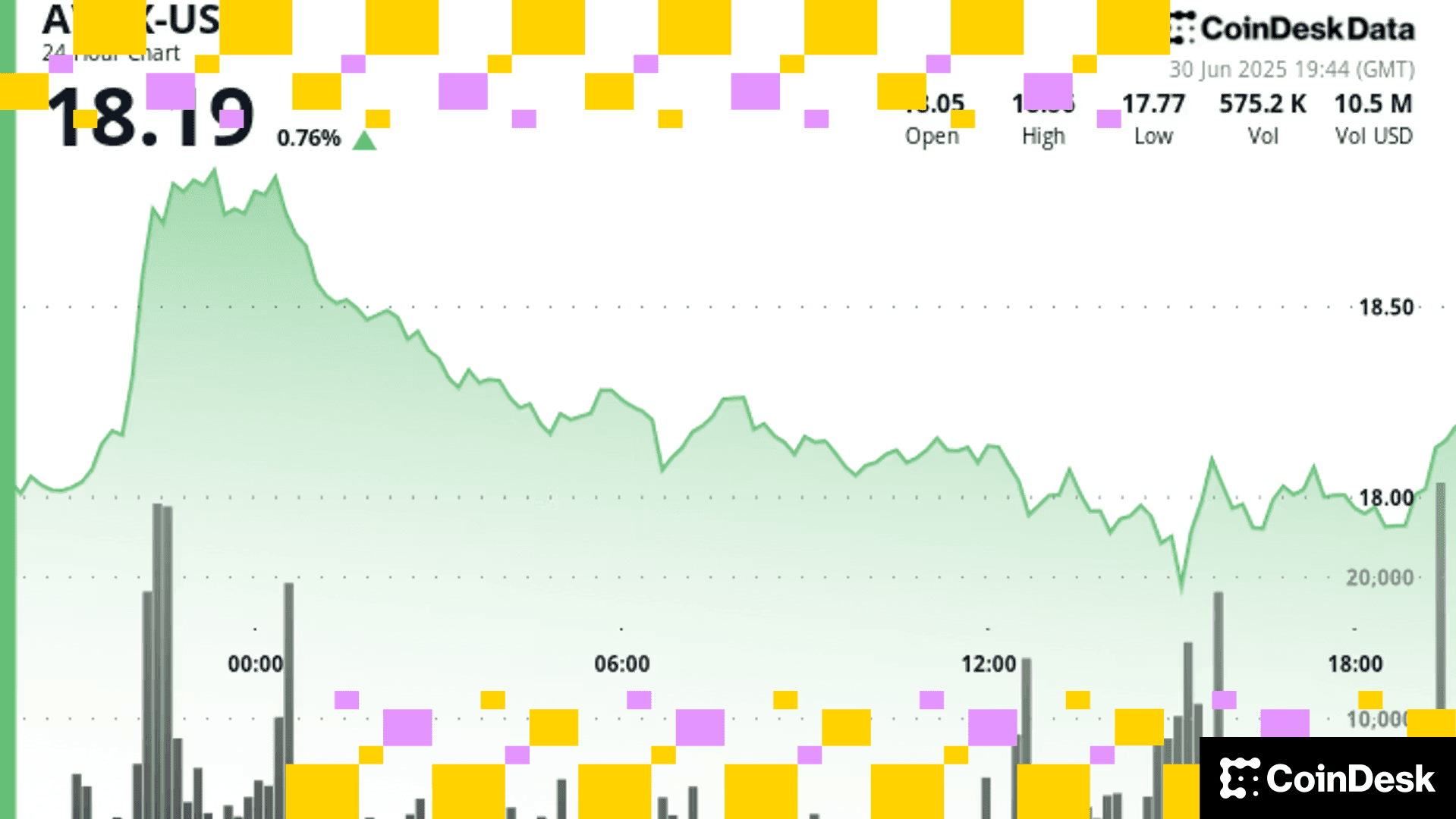Top US Bank Watchdog Warns of Stablecoins' 'Lack of Interoperability'
The OCC's acting chief argues the variation across tokens could create walled gardens.

The wildly different approaches the crypto industry has taken to designing and hosting stablecoins may be good for innovation but bad for practical and safe usage, argued Michael Hsu, the acting chief of the Office of the Comptroller of the Currency, at a Georgetown University Law Center event on Friday.
Hsu, who is among several U.S. regulators working on guardrails for how stablecoins should be overseen, noted that a single type of token, such as tether (USDT), isn’t the same across different blockchains, nor is it directly exchangeable with other dollar-based tokens. If private stablecoins ever become a common means of buying and selling things – rather than trading other cryptocurrencies – Hsu said they can’t be freely swapped with each other, in contrast to a dollar deposited at institutions such as Chase or Wells Fargo.
“Without interoperability amongst [U.S. dollar]-based stablecoins, the risk of digital ecosystems being fragmented and exclusive – with walled gardens – is heightened,” Hsu argued. “If or when stablecoins expand from trading to payments, this lack of interoperability will become more apparent.”
He said he also worries about these financial gardens excluding people.
“What’s the standard-setting body for interoperability on stablecoins? There is none right now,” he said. “So I would encourage some thinking along those lines and having a public voice at that table.”
An evolving position
Though Hsu been an outspoken critic in the past of crypto’s potential hazards, equating the industry with the risky financial products that caused the financial system to collapse in 2008, his latest remarks reveal he’s not entirely dismissing the industry. As Treasury Secretary Janet Yellen did in her first speech on digital assets Thursday, Hsu granted that digital-asset innovations may dramatically revolutionize the system.
“Today, cryptocurrencies are used primarily for trading on exchanges,” he said. “Tomorrow, they may collapse and exist only on the shadowy peripheries of the financial system, or they may grow and power the next evolution of our digital lives and the digital economy.”
Much of the bandwidth of federal financial regulators is now taken up by crypto issues, as has been seen this week in the speeches of Yellen, Hsu and Securities and Exchange Commission (SEC) Chair Gary Gensler. While Gensler’s SEC has been actively chasing enforcement actions to rein in crypto firms, Hsu’s predecessors at the OCC had in recent years attempted to welcome digital-assets businesses into the banking system.
Shortly after Hsu took over the OCC last May, however, he slammed the brakes on much of that while the agency works out what to do about stablecoins and other assets.
Hsu noted on Friday that there are some technical pitfalls in marrying banking and crypto, including dangers to a lender’s liquidity cushion if they’re immersed in large-scale cryptocurrency transactions.
“The accumulation of blockchain-based payments over, say, a weekend could outstrip a bank’s available liquidity resources,” he said. Hsu suggested the answer could be to silo such activity into a separate, bank-chartered part of the company.
Hsu said he’s also been impressed with some of the “really thoughtful” legislative efforts trying to address stablecoins.
Read more: OCC Chief Hsu Says Regulation Could Boost Stablecoin Innovation
Більше для вас
Exchange Review - March 2025

CoinDesk Data's monthly Exchange Review captures the key developments within the cryptocurrency exchange market. The report includes analyses that relate to exchange volumes, crypto derivatives trading, market segmentation by fees, fiat trading, and more.
Що варто знати:
Trading activity softened in March as market uncertainty grew amid escalating tariff tensions between the U.S. and global trading partners. Centralized exchanges recorded their lowest combined trading volume since October, declining 6.24% to $6.79tn. This marked the third consecutive monthly decline across both market segments, with spot trading volume falling 14.1% to $1.98tn and derivatives trading slipping 2.56% to $4.81tn.
- Trading Volumes Decline for Third Consecutive Month: Combined spot and derivatives trading volume on centralized exchanges fell by 6.24% to $6.79tn in March 2025, reaching the lowest level since October. Both spot and derivatives markets recorded their third consecutive monthly decline, falling 14.1% and 2.56% to $1.98tn and $4.81tn respectively.
- Institutional Crypto Trading Volume on CME Falls 23.5%: In March, total derivatives trading volume on the CME exchange fell by 23.5% to $175bn, the lowest monthly volume since October 2024. CME's market share among derivatives exchanges dropped from 4.63% to 3.64%, suggesting declining institutional interest amid current macroeconomic conditions.
- Bybit Spot Market Share Slides in March: Spot trading volume on Bybit fell by 52.1% to $81.1bn in March, coinciding with decreased trading activity following the hack of the exchange's cold wallets in February. Bybit's spot market share dropped from 7.35% to 4.10%, its lowest since July 2023.
Mais para você












